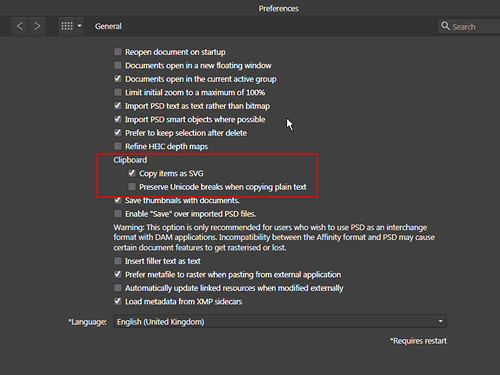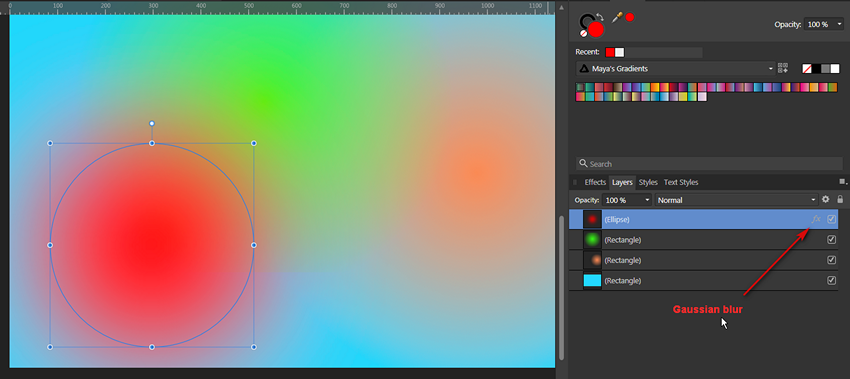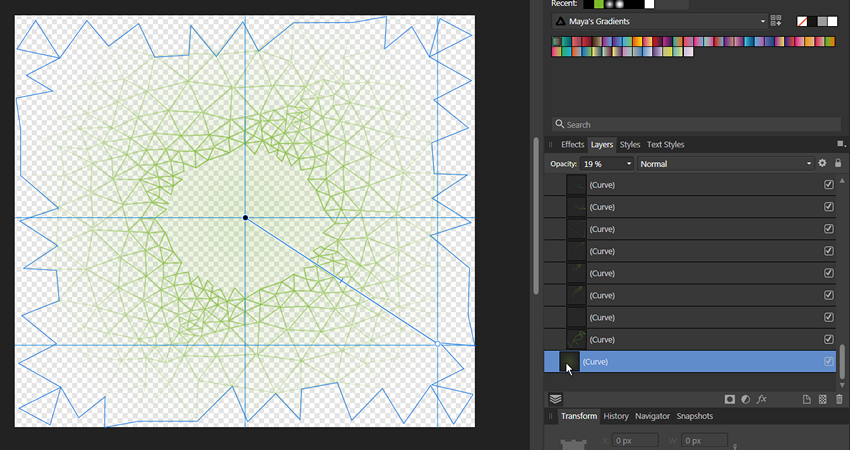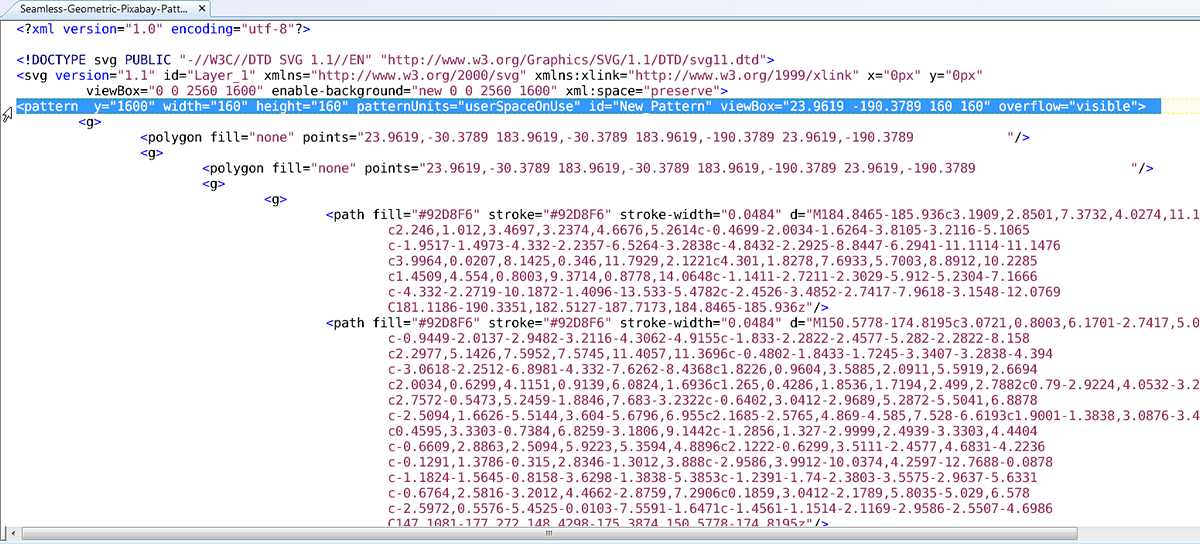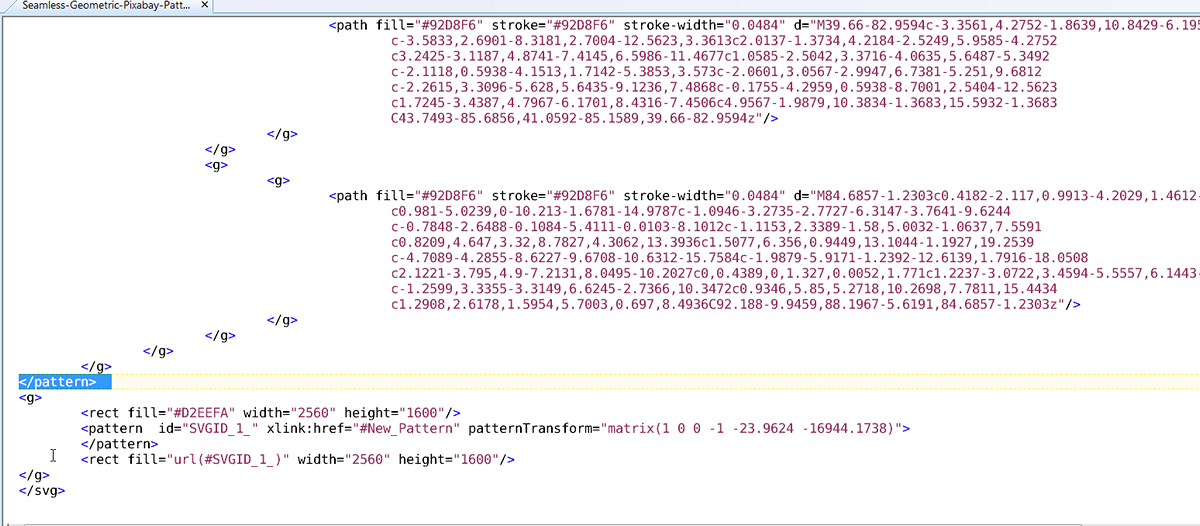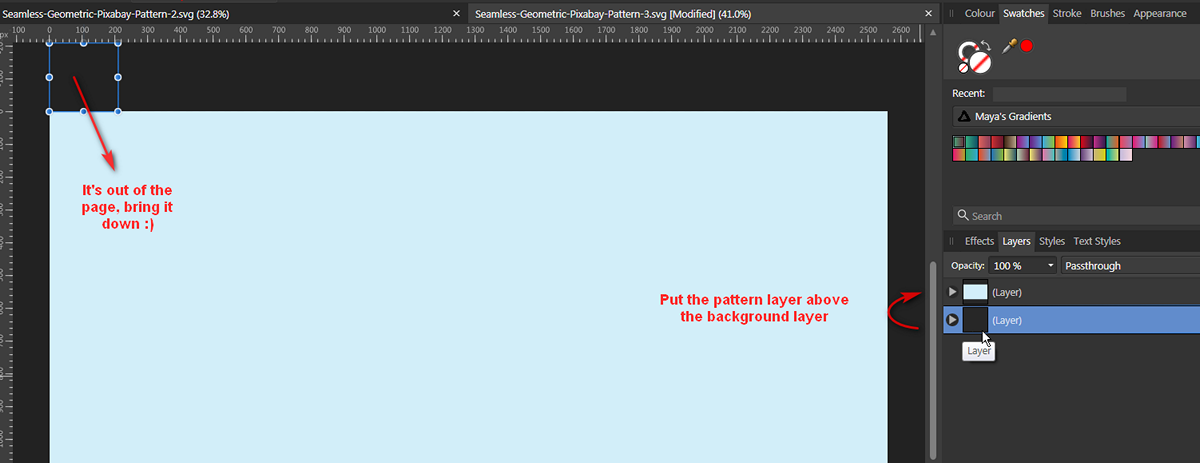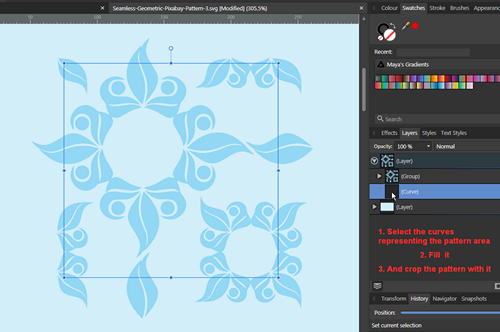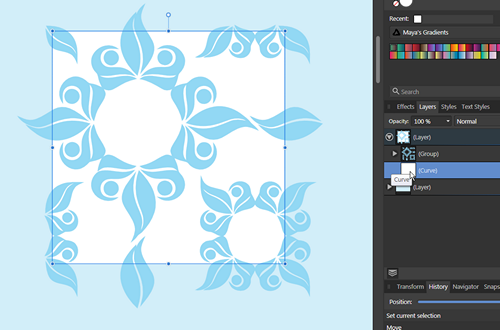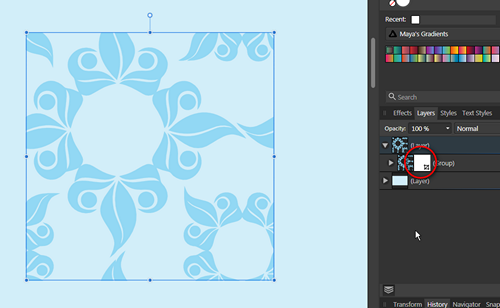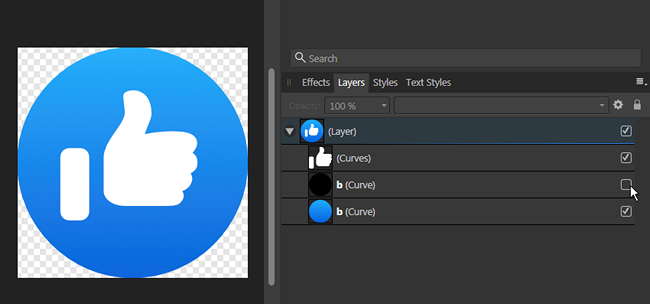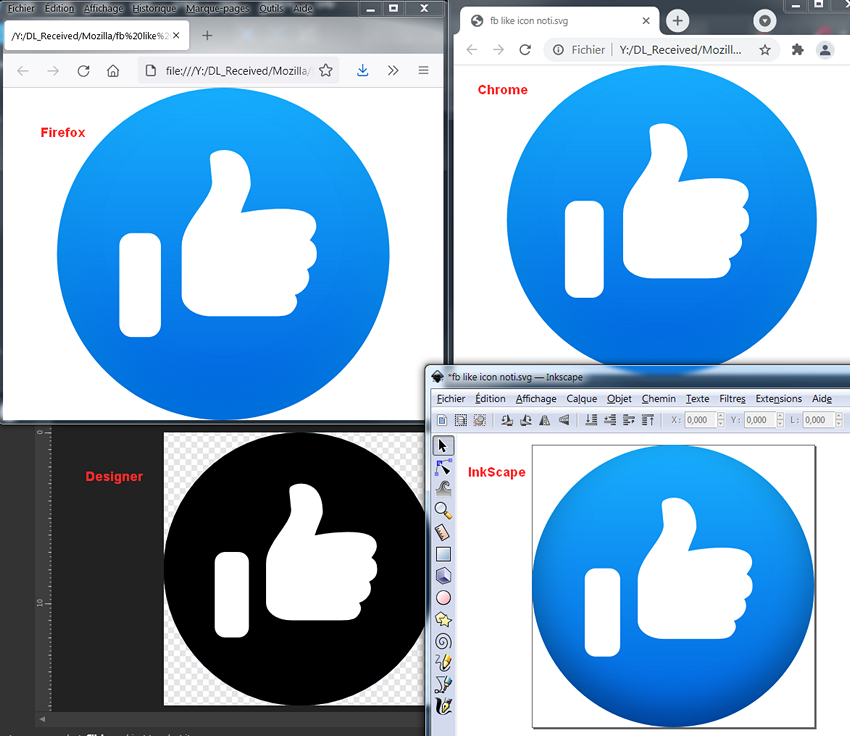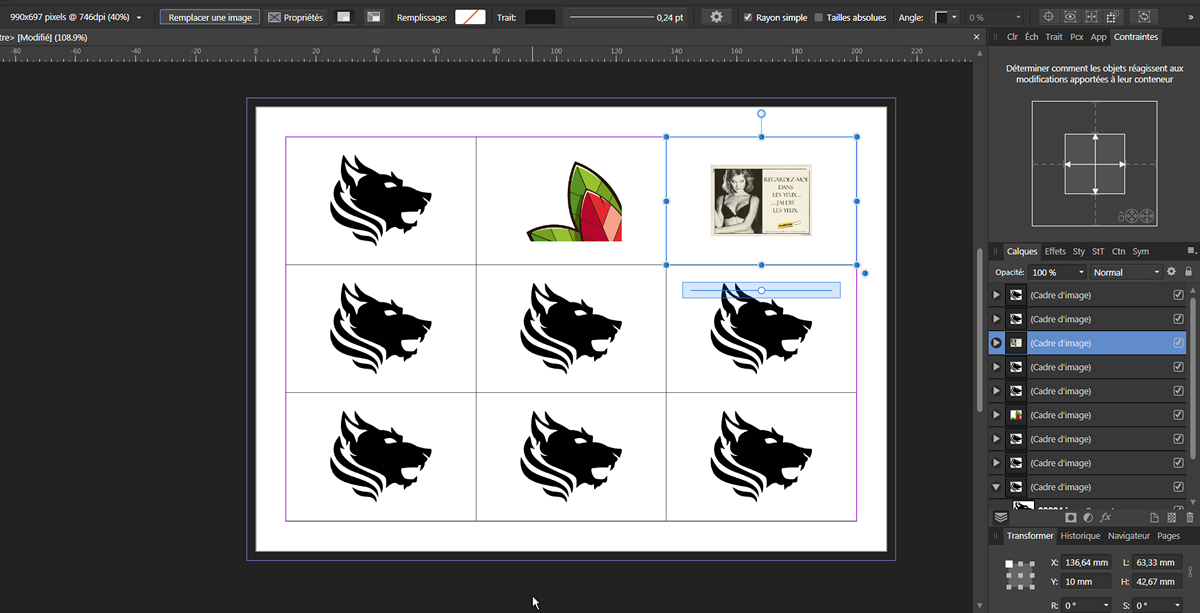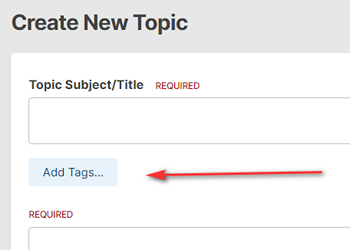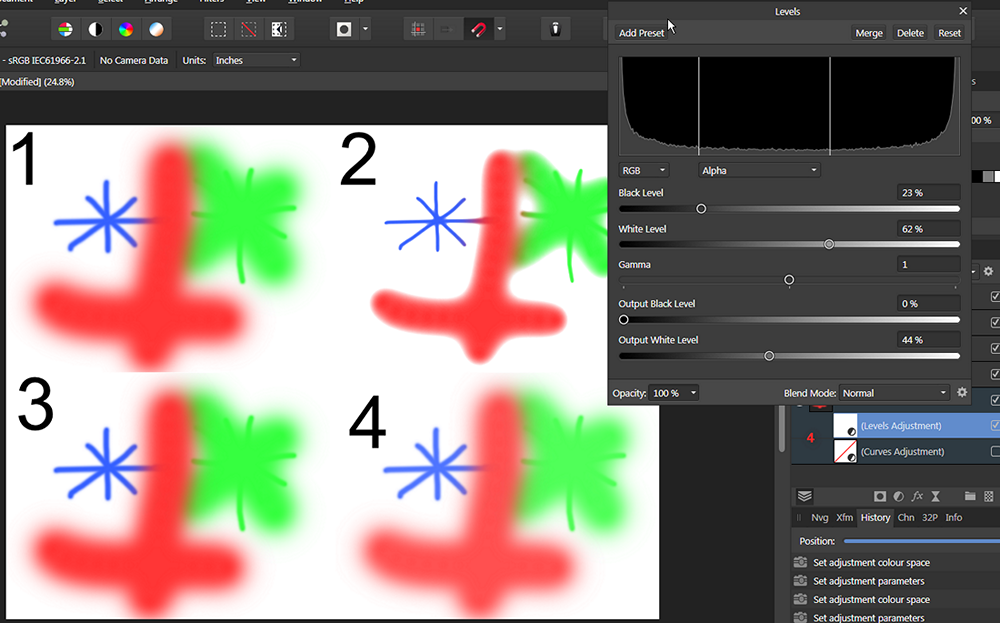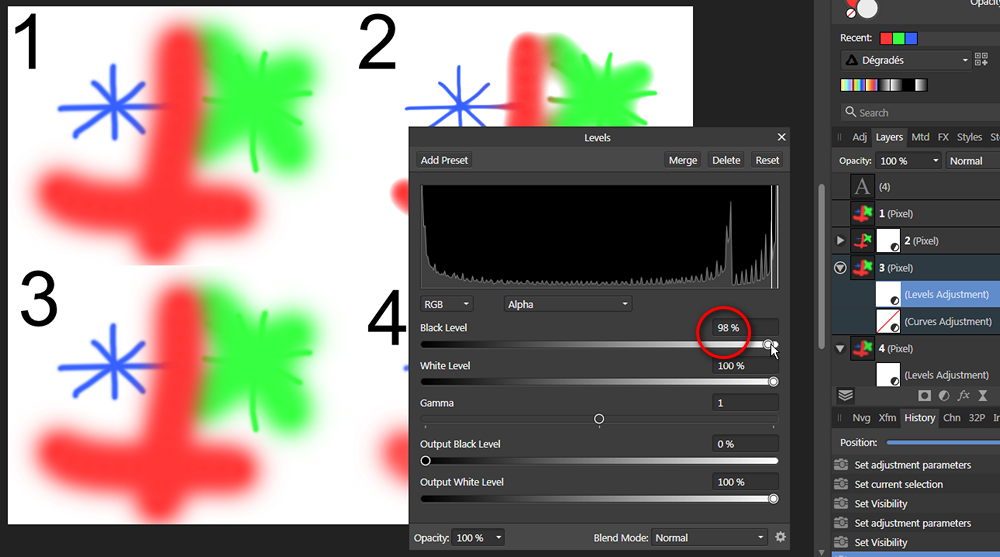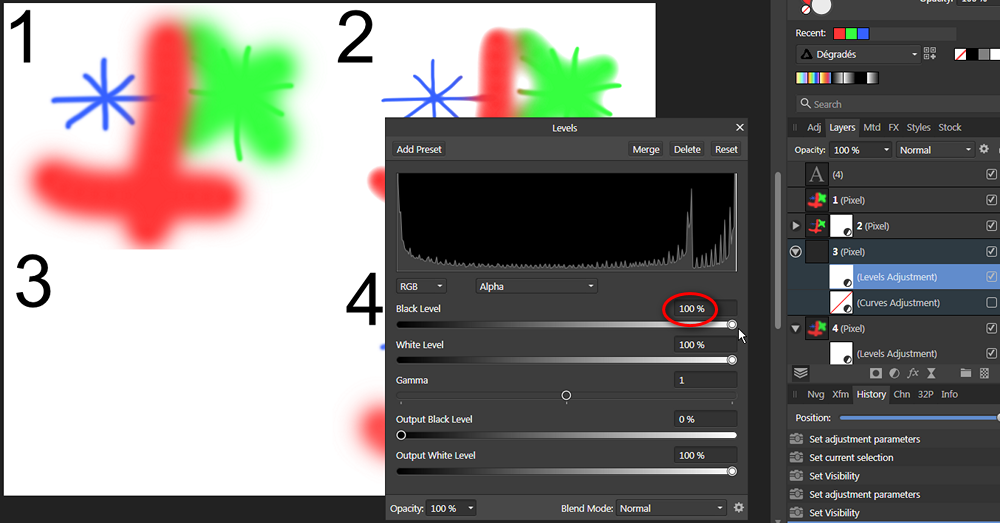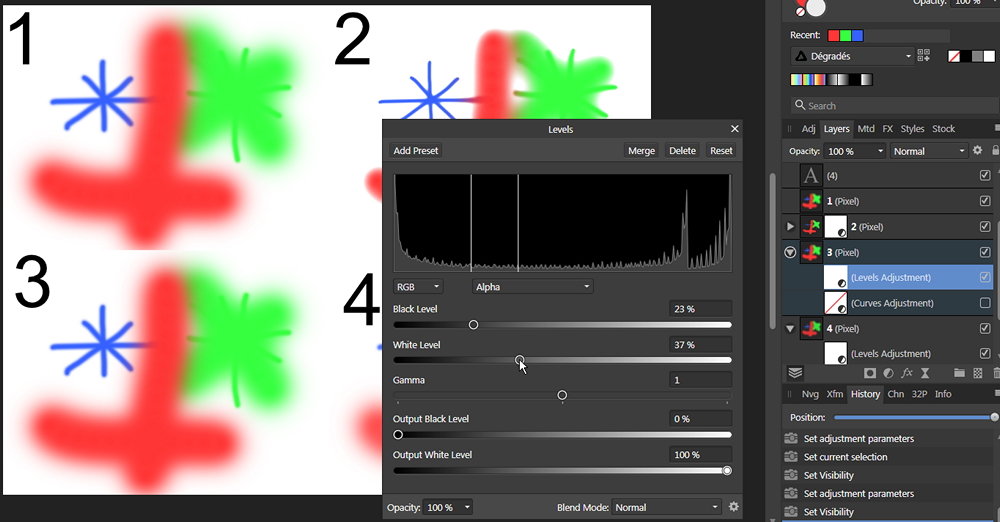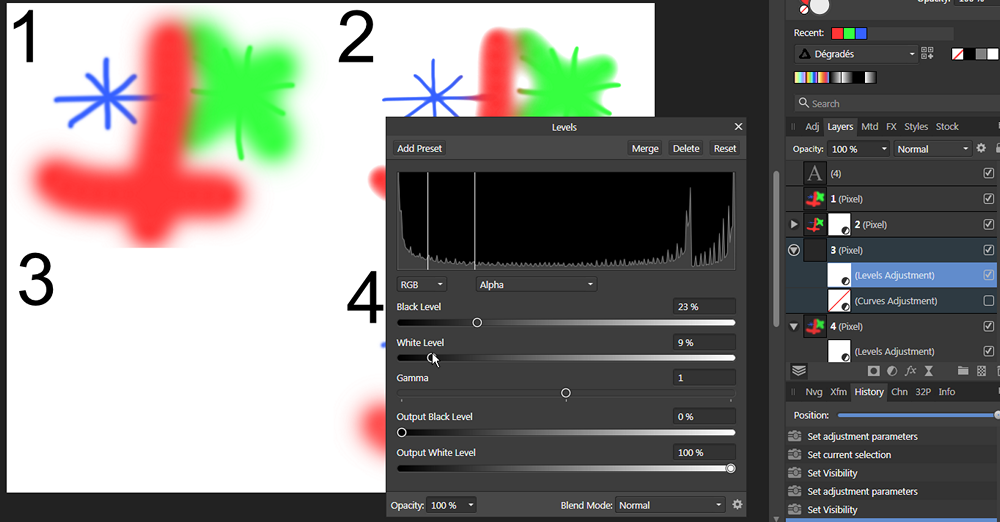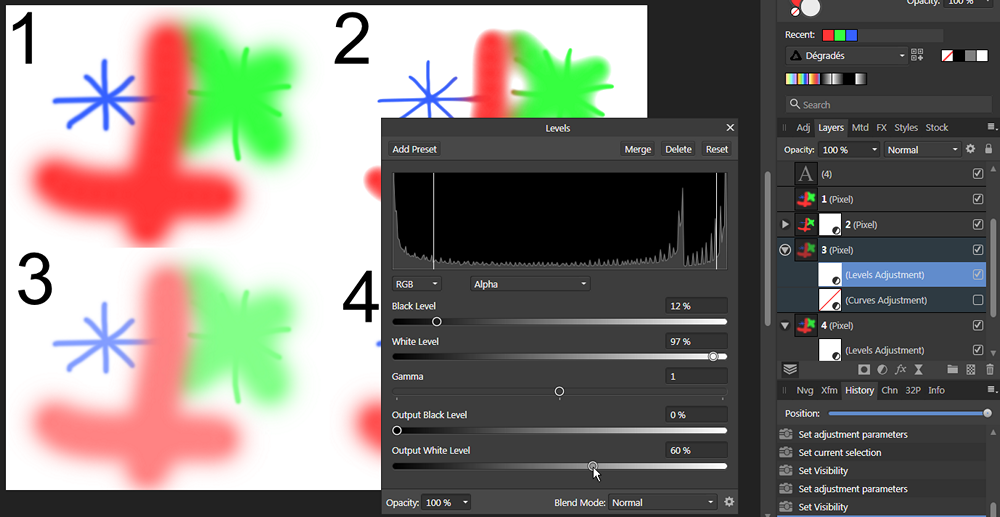-
Posts
4,130 -
Joined
-
Last visited
Everything posted by Wosven
-
Did you test with this option in the preferences, since it can paste as vector, depending of the effects and properties you used:
- 317 replies
-
- mac
- free transform tool
-
(and 5 more)
Tagged with:
-
You can only apply transparency on an object, not a group. For your mesh, the best way it to get all elements together, and apply the transparency on them all at once. I just added 4 guides to reproduce the same gradient on the bottom curve. mesh2v3.svg mesh3.afdesign Also: You can use gaussian blur on a shape, it'll be converted in a layer with a gradient for the transparency. transparencies_in_group2.svg
-

Auto Distribute disabled
Wosven replied to putsomecrap's topic in Pre-V2 Archive of Desktop Questions (macOS and Windows)
You probably didn't select anything...- 7 replies
-
- distribute
- distribution
-
(and 5 more)
Tagged with:
-
There's a workaround: Open the SVG in a text editor (not a word processor) delete the 2 lines with the pattern tag at the top and the bottom Save and open in AD: Once you've corrected the pattern, you can copy and dupplicate it.
-
Sadly, Affinity apps can't read and use or create SVG patterns.
-
Nevertheless, there are bugs! In Firefox display, in Chrome display, in ADesigner display (and perhaps features, since it's not able to reproduce such effects). I wonder how Safari display this SVG… and if those bugs were already reported.
-
First thing, don't forget to check the layers: There's a black layer, that if hidden, display the proper SVG. Checking in other apps, we can see this round shadow effect is only visible in InkScape (and it's probably related to the "black" layer). Since neither Firefox or Chrome are able to render it, it's possible it's part of new effects and modes in test, but not yet in the specifications of SVG. It happens also with new CSS properties. <svg xmlns='http://www.w3.org/2000/svg' xmlns:xlink='http://www.w3.org/1999/xlink' viewBox='0 0 16 16'> <defs> <linearGradient id='a' x1='50%' x2='50%' y1='0%' y2='100%'> <stop offset='0%' stop-color='#18AFFF'/> <stop offset='100%' stop-color='#0062DF'/> </linearGradient> <filter id='c' width='118.8%' height='118.8%' x='-9.4%' y='-9.4%' filterUnits='objectBoundingBox'> <feGaussianBlur in='SourceAlpha' result='shadowBlurInner1' stdDeviation='1'/> <feOffset dy='-1' in='shadowBlurInner1' result='shadowOffsetInner1'/> <feComposite in='shadowOffsetInner1' in2='SourceAlpha' k2='-1' k3='1' operator='arithmetic' result='shadowInnerInner1'/> <feColorMatrix in='shadowInnerInner1' values='0 0 0 0 0 0 0 0 0 0.299356041 0 0 0 0 0.681187726 0 0 0 0.3495684 0'/> </filter> <path id='b' d='M8 0a8 8 0 00-8 8 8 8 0 1016 0 8 8 0 00-8-8z'/> </defs> <g fill='none'> <use fill='url(#a)' xlink:href='#b'/> <use fill='black' filter='url(#c)' xlink:href='#b'/> <path fill='white' d='M12.162 7.338c.176.123.338.245.338.674 0 .43-.229.604-.474.725a.73.73 0 01.089.546c-.077.344-.392.611-.672.69.121.194.159.385.015.62-.185.295-.346.407-1.058.407H7.5c-.988 0-1.5-.546-1.5-1V7.665c0-1.23 1.467-2.275 1.467-3.13L7.361 3.47c-.005-.065.008-.224.058-.27.08-.079.301-.2.635-.2.218 0 .363.041.534.123.581.277.732.978.732 1.542 0 .271-.414 1.083-.47 1.364 0 0 .867-.192 1.879-.199 1.061-.006 1.749.19 1.749.842 0 .261-.219.523-.316.666zM3.6 7h.8a.6.6 0 01.6.6v3.8a.6.6 0 01-.6.6h-.8a.6.6 0 01-.6-.6V7.6a.6.6 0 01.6-.6z'/> </g> </svg> Strangely, feGaussianBlur seems to be implemented in Chrome and Edge Firefox*, but perhaps the way it's used there give a problem: https://developer.mozilla.org/en-US/docs/Web/SVG/Element/feGaussianBlur [edit] Not sure how I end up writting "Edge" instead of Firefox... [/edit]
-
Hi @Kronoz, That's a problem long known and without real solution. // Es un problema conocido desde hace tiempo y sin solución real. ...And there's a lot of threads about this: // ...Y hay muchos hilos sobre esto: https://forum.affinity.serif.com/index.php?/search/&q=effects paste different&quick=1 It mainly comes from the apps not being able to produce "real" object styles", but working as a glorified Pipette, copying and pasting some properties from an object to another. // Principalmente proviene de que las aplicaciones no son capaces de producir estilos de objetos "reales", sino que funcionan como una pipeta glorificada, copiando y pegando algunas propiedades de un objeto a otro. Problem: we can't check or modify those properties globally. // Problema: no podemos comprobar o modificar esas propiedades de forma global. If we apply a Style to another object, the properties are scaled and different. // Si aplicamos un Estilo a otro objeto, las propiedades se escalan y son diferentes. Using AD select options: we can't search based on the name of an applied Style, only by properties (but it's commun to have 2 styles or more with same properties, of different values to different size objects, in this case, they'll all be selected without disctinction). // Usando las opciones de selección de AD: no podemos buscar en base al nombre de un Estilo aplicado, sólo por propiedades (pero es común tener 2 estilos o más con las mismas propiedades, de diferentes valores a objetos de diferente tamaño, en este caso, todos serán seleccionados sin distinción). Since there's no link between an object and the style applied on it, we can't modify a Style (and it's impossible in the current implementation) and have the modifications applied to all objects with this Style (cf. post below about this subject). // Dado que no existe un vínculo entre un objeto y el estilo que se le aplica, no se puede modificar un estilo (y es imposible en la implementación actual) y que las modificaciones se apliquen a todos los objetos con ese estilo (véase el siguiente post sobre este tema).
-

Defecto o error? Copiar efectos de capa
Wosven replied to Kronoz's topic in Feedback for Affinity Publisher V1 on Desktop
No need to dupplicate the previous post. -

How do I add tags to a post? (split)
Wosven replied to Vaz's topic in Pre-V2 Archive of Desktop Questions (macOS and Windows)
They are blue when you add them, and grey once posted. -
Depending of your needs, you'll have to check the technology for screen and stylus if you want to use one. If you want to draw, paint, and need pressure, tilting, etc. you'll need a Surface Pen... or checking forums about this laptop to check what is available and if it suits your needs. And if there's today another stylus with such features. If you only need a mouse usually, a simple stylus will do the same.
-
Most online site won't understand if you give if a CMYK JPG. For preview images, you'd rather use classical sRGB. (When web site/gallery convert/resize 4 channels images assuming there's only 3 channels, the image turn dark, same problem with transparency, but since you save as JPG, it's not relevant, since there's none, as said @Garmo.)
-

No longer have Affinity Photo
Wosven replied to Cooper's topic in Pre-V2 Archive of Desktop Questions (macOS and Windows)
Welcome @Cooper, It's also possible you bought it on Apple or Windows store, and need to check the one relevant. -

How do I add tags to a post? (split)
Wosven replied to Vaz's topic in Pre-V2 Archive of Desktop Questions (macOS and Windows)
-
There's a Pro and a free version of Adobe Acrobat Reader DC. You can install the free version and as shown in my previous post, use it to display transparency. It's also the best tool to look at and check PDF (few other apps have full PDF code implemented). It does not prevent from using another application — a lighter and faster one — for usual reading of PDF, but in a professionnal way, checking files with Adobe Acrobat is recommended, and the free version 's got a lot of option, like displaying transparency.
-

[Publisher] Spell checking 'Auto' option
Wosven replied to EEvgeniy's topic in Feedback for Affinity Publisher V1 on Desktop
Good old Character styles will do simply... and without confusion. There's always an important part when writing/copy-reading where we need — or copy-editors — to read everything and manage such subtelities. It can be confusing when doing it as human, I'm not sure an AI would be able to manage such difficulties. -

Beta 1.10.0.251 RC2 nested alpha
Wosven replied to NotMyFault's topic in [ARCHIVE] Photo beta on iPad threads
Oups! I suspect a lack of coffee... it's effectively at 74% for black... To compare with the Windows version, nothing subtle, Levels work but sometimes it need moving the slider a lot to begin getting some results: 98% nothing happens, 100% nothing on the screen! Nothing but trying extrem slider to get a result: The output is more effective: But in the end, when compared to same Adjustements done on a B&W layer, where we can do subtle modifications, I would say there's a bug in general with adjustements on alpha channel. 1.10.0.251 nested alpha2.afphoto -

Beta 1.10.0.251 RC2 nested alpha
Wosven replied to NotMyFault's topic in [ARCHIVE] Photo beta on iPad threads
WHat do you mean? There are a Levels and a Curves adjustements, but I don't find any modification —and resulting on the image, on the Levels one. -
It's possible that this code will give a hint to Affinity' staff to help you, since it seems: From: https://docs.microsoft.com/en-us/windows/win32/msi/windows-installer-error-messages [edit]And there's even less codes for .exe files https://docs.microsoft.com/en-us/windows/win32/msi/error-codes [/edit]


